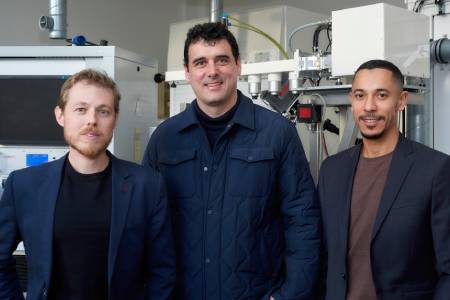

For 30 years, the researchers behind the start-up have been working on the various stages in diamond manufacture, which can be produced industrially at reasonable cost through 'chemical vapour deposition'. 'We use a commercial substrate, on which we deposit thin layers of "doped" diamond with special electrical properties.' Not only does the start-up manufacture the material, it also produces the components themselves, some of which are protected by patents.
A pilot line up and running in 2026
The €8.7 million that Diamfab recently raised will be used to continue developing and scaling up its technology. 'Currently, diamond is deposited onto 0.5-inch-diameter plates, and we need to increase this to at least 4 inches to make the technology industrially viable.' Meanwhile, the start-up is working with manufacturers such as SOITEC, ST Microelectronics, Murata and Schneider Electric to develop and produce the test components they need in small production runs under realistic, reproducible conditions. 'We are finishing setting up a small pilot line to produce small runs by 2026, with a market launch scheduled for 2030.'
The target markets include applications in power electronics, particularly in the automotive industry, as well as quantum sensors.
*CNRS / UGA / Grenoble INP - UGA



